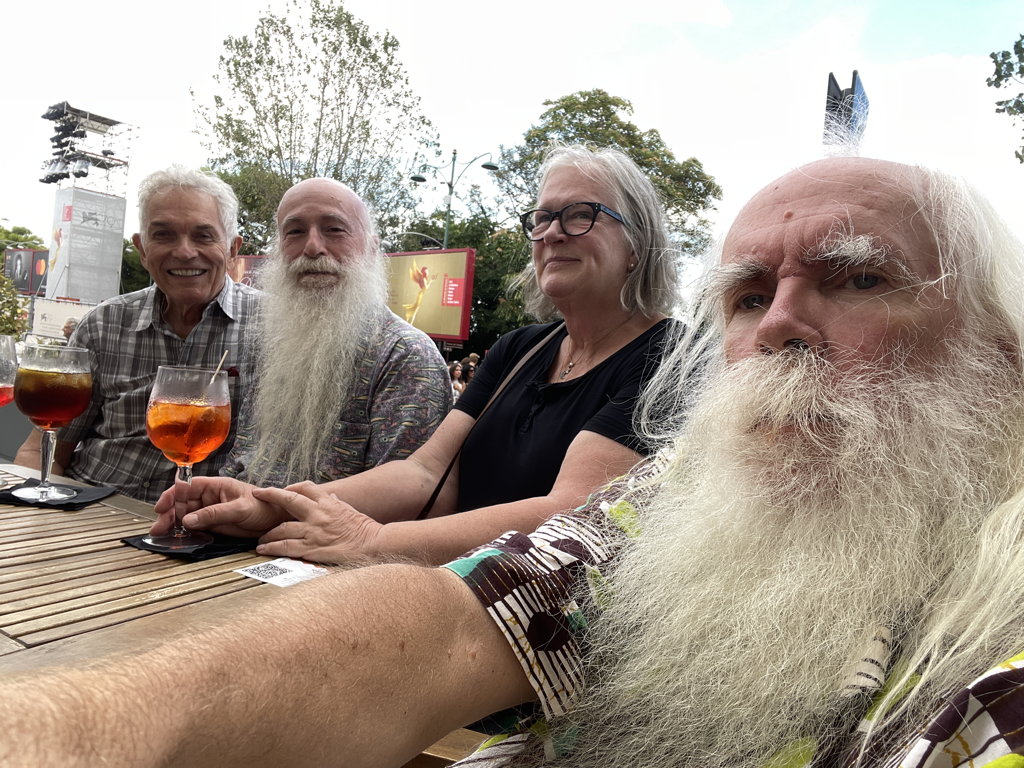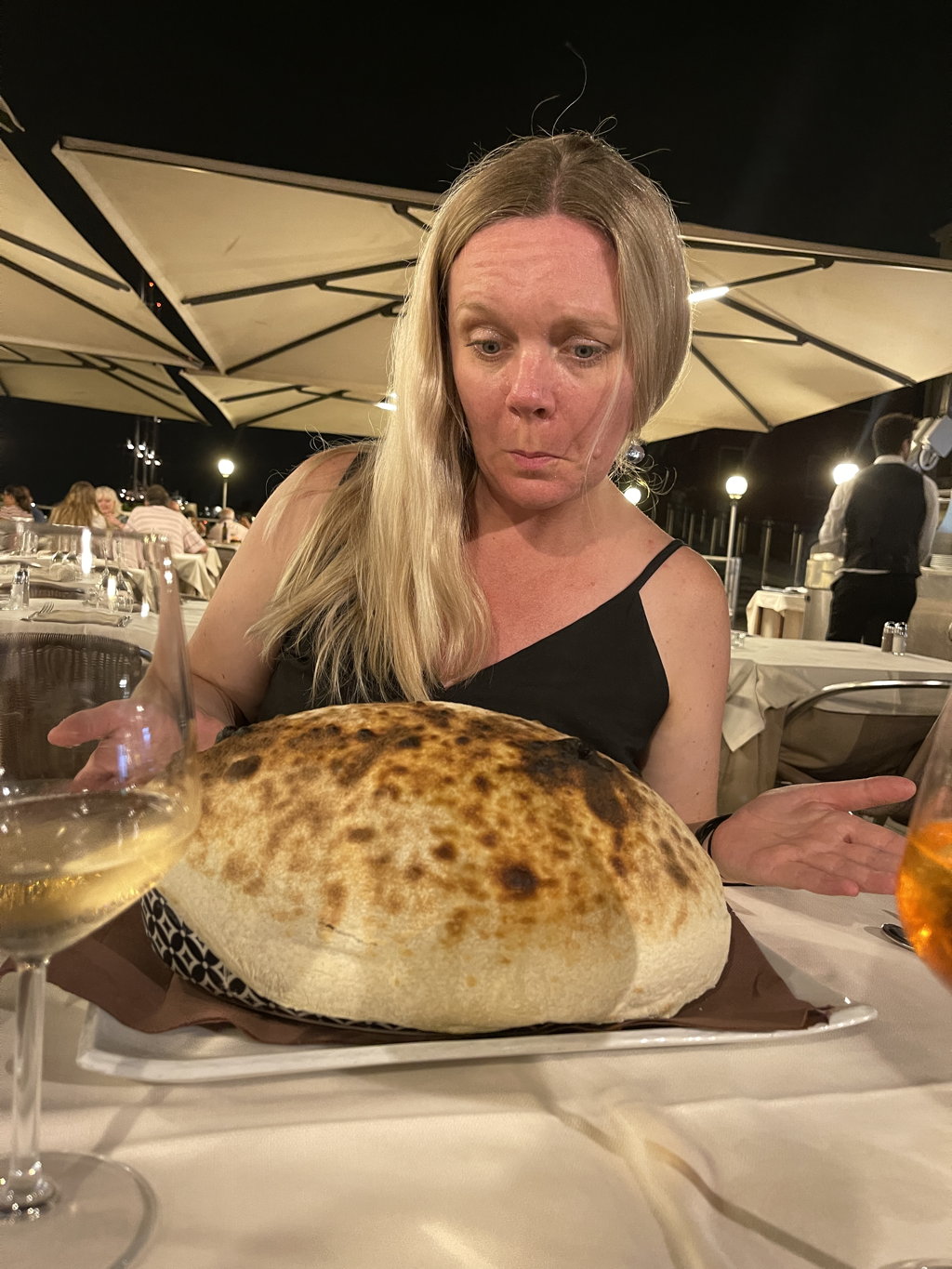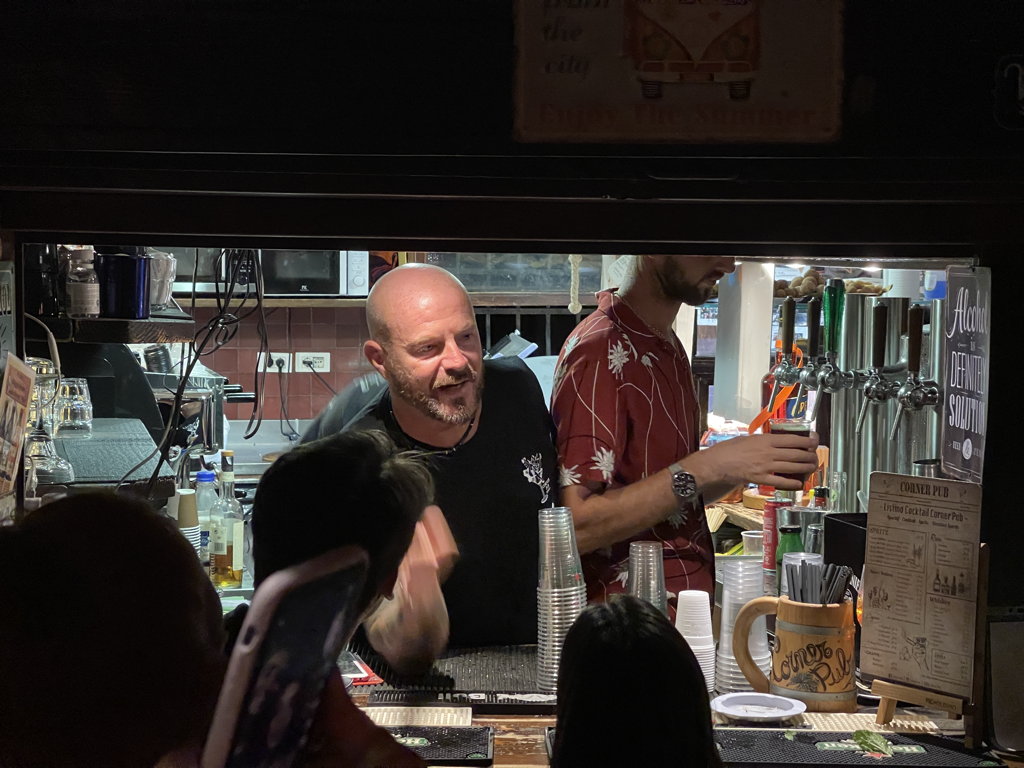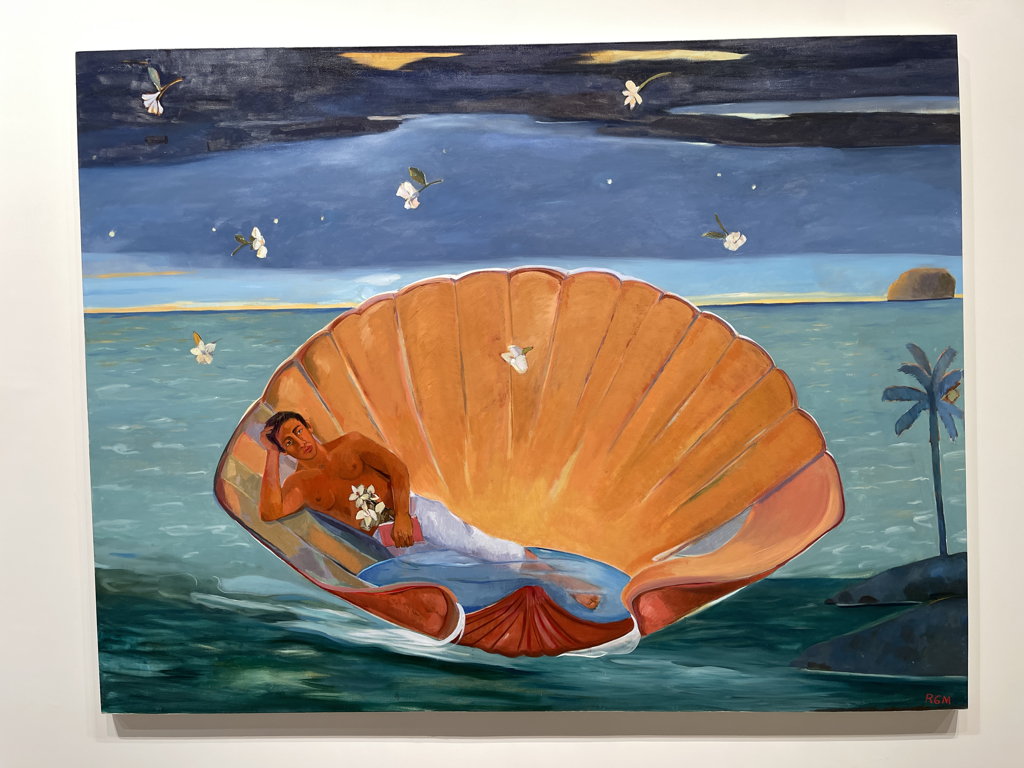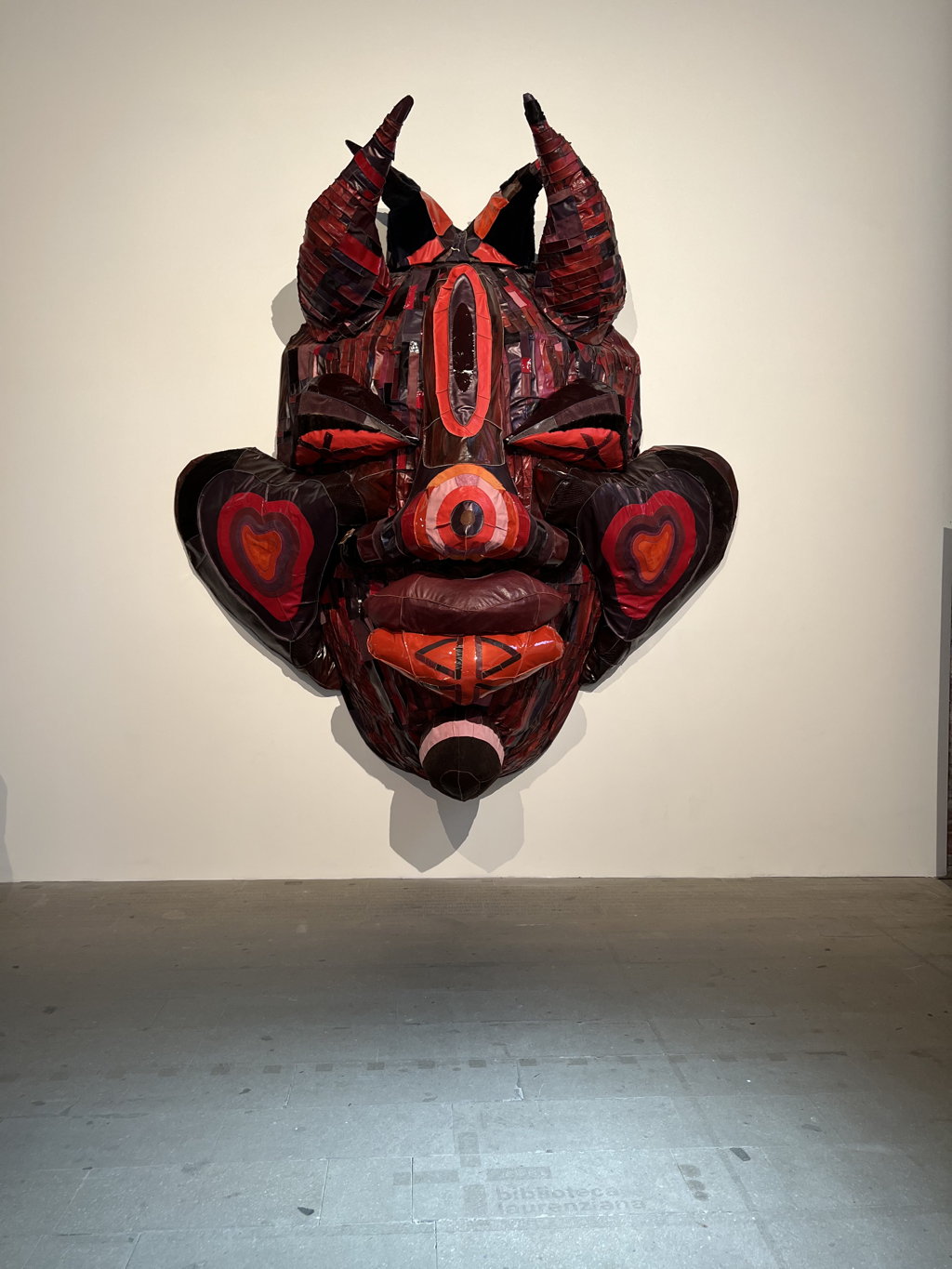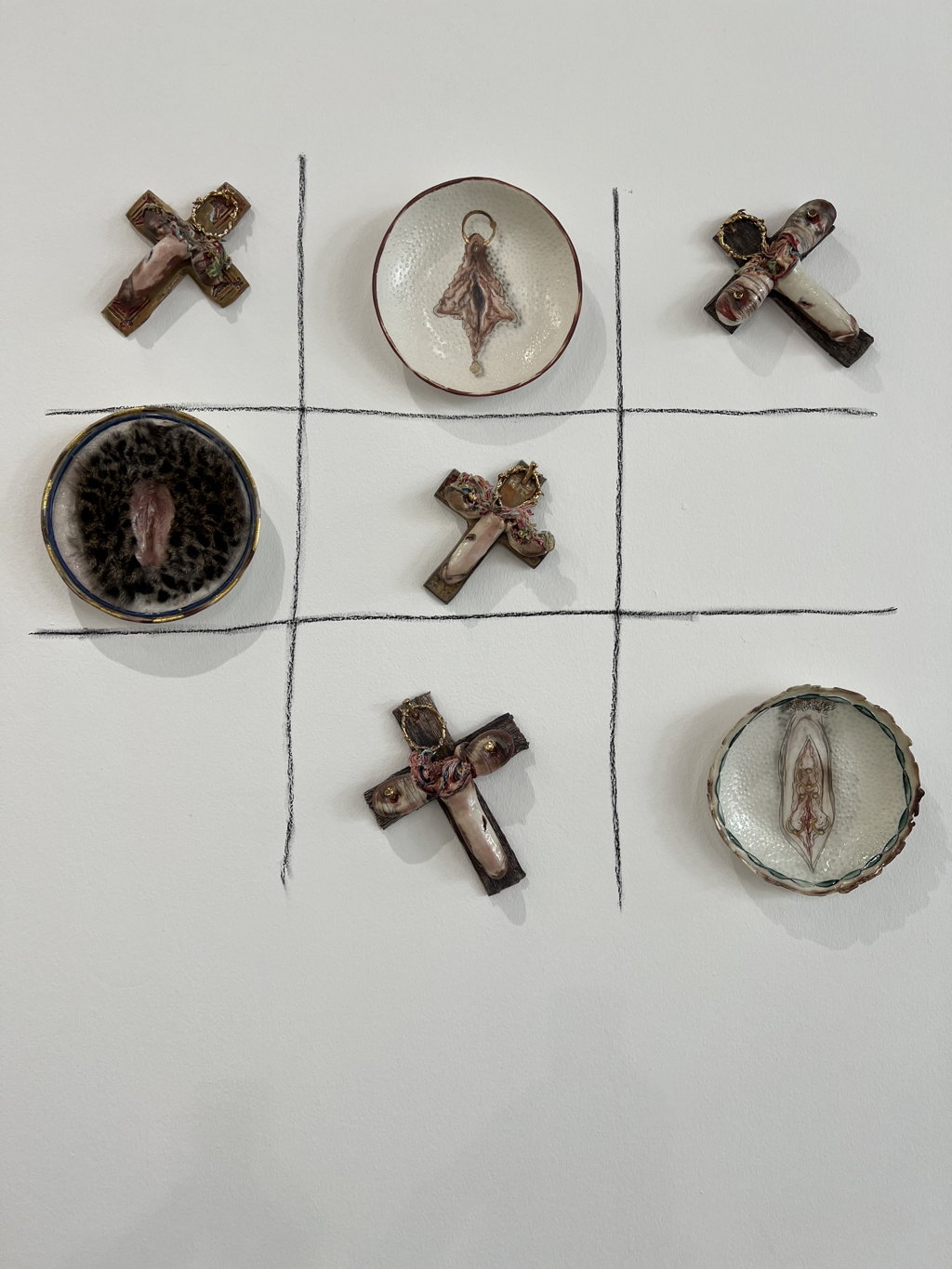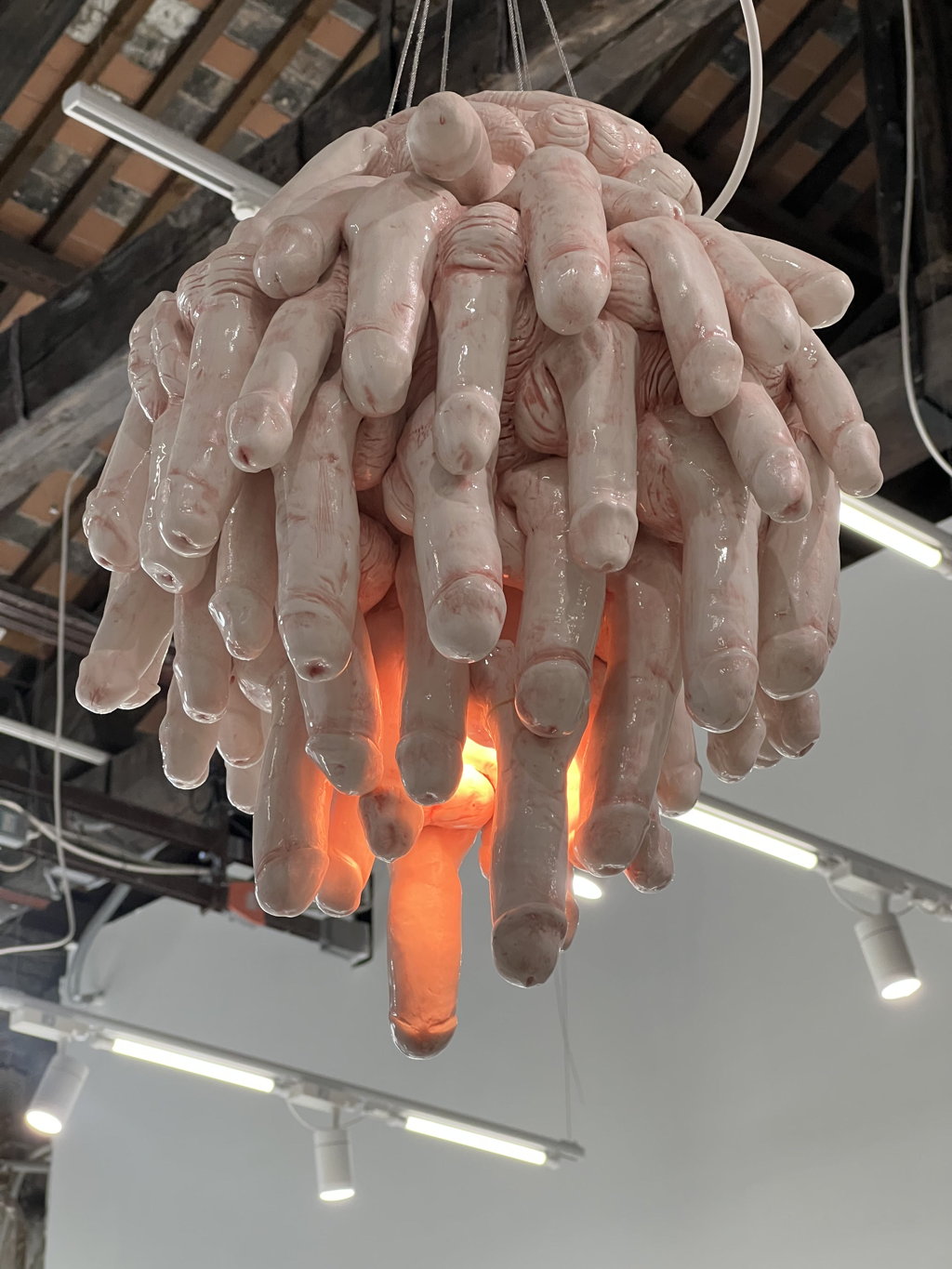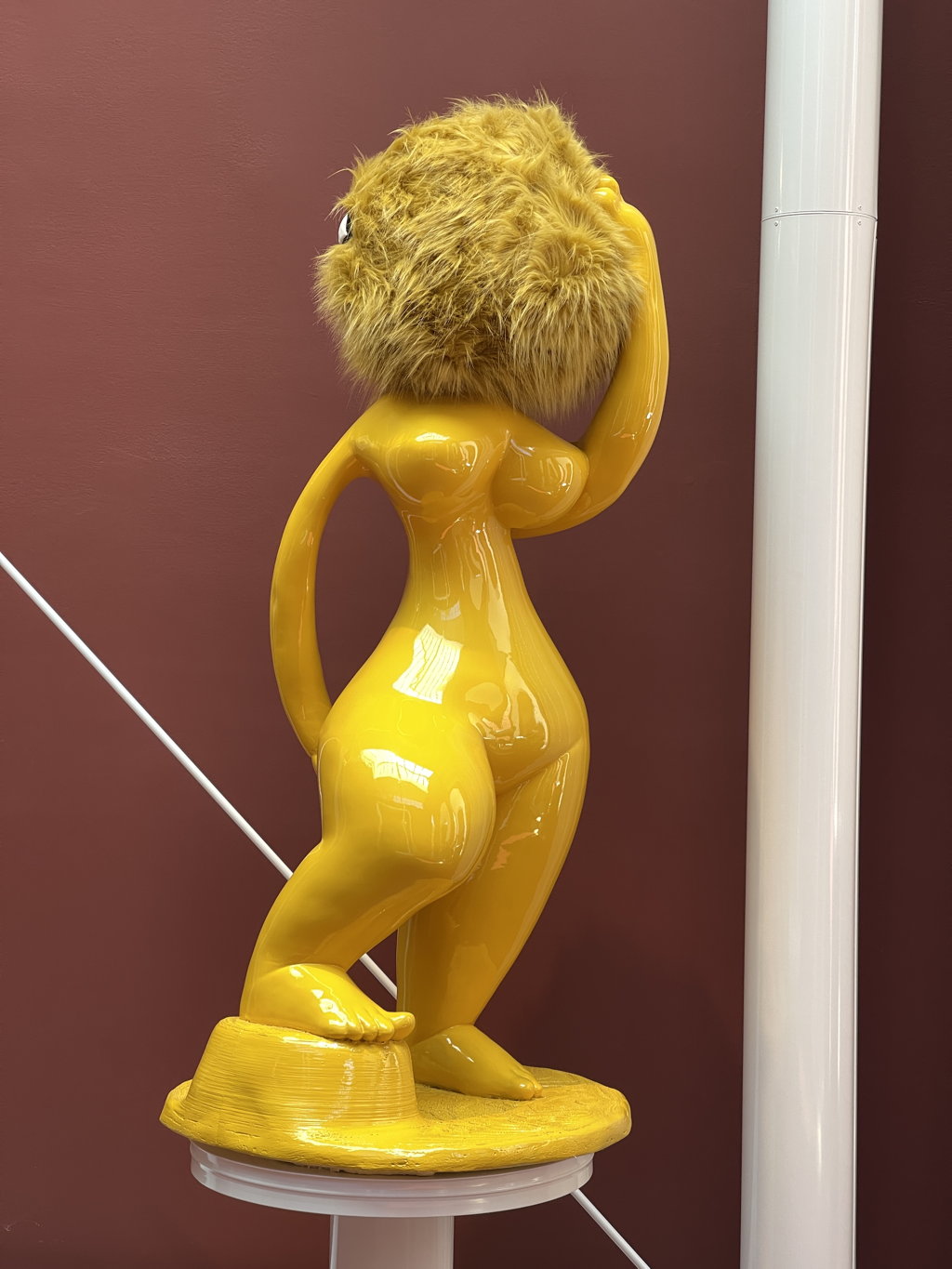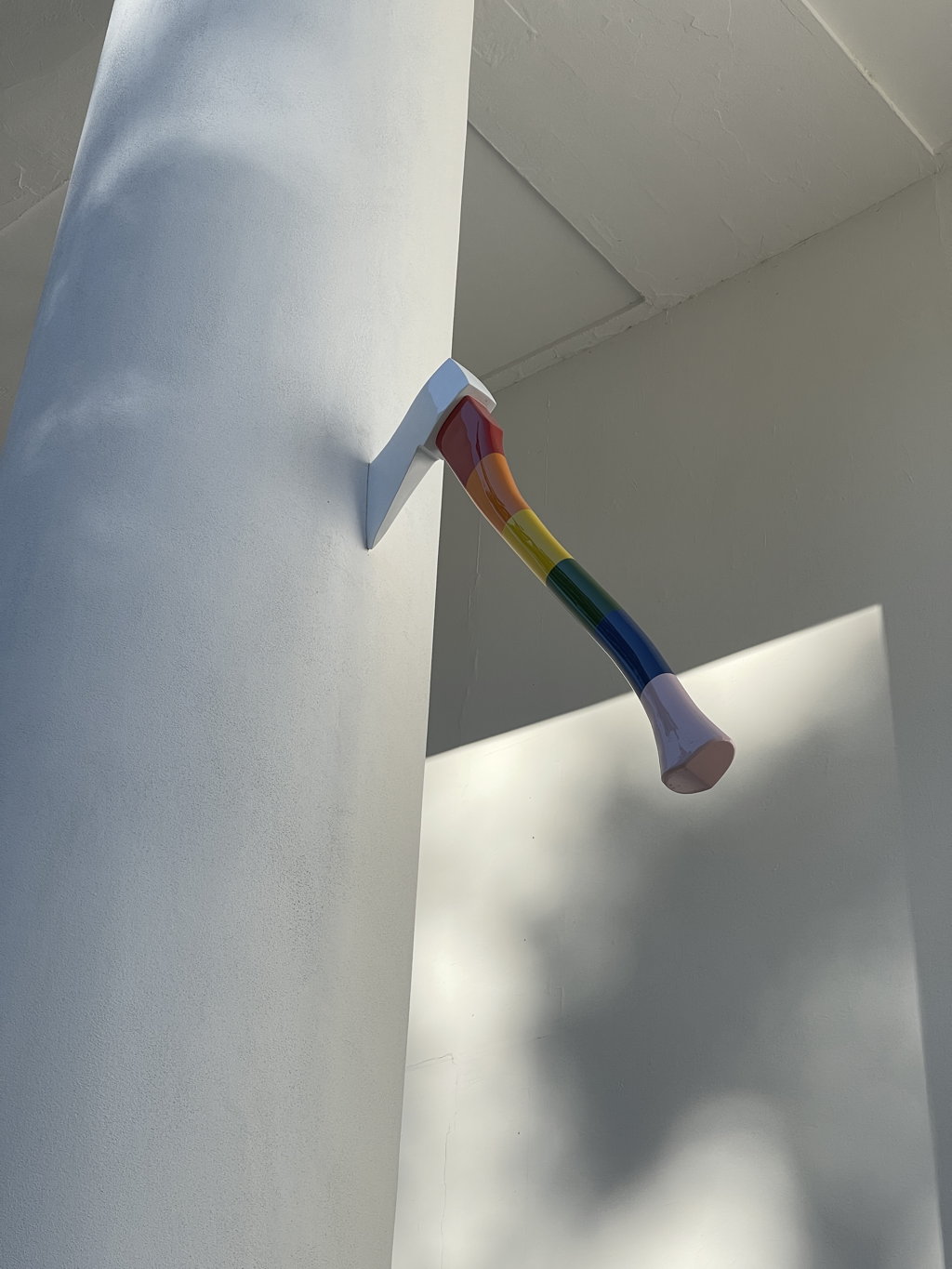Sunday, September 11
There is a lot in northern Italy besides Venice but we keep seeing Venice and then taking off to some other country. This is wrong. So this year, it was necessary to go see Not Venice. The closest choice was Padua, but then we were informed that our friend Sienna was an exchange student in Parma, so we decided to meet halfway in Bologna, which everybody agrees is a grand city with the best food. Spaghetti Bolognese for example, or “SpagBol” as our British friend Adrian called it a few months back when he served it, channeling his university days.
Our guide for this trip was Atlas Obscura. We’ve used Fodor’s, Michelin, Lonely Planet, Tripadvisor, but lately I’ve been gravitating toward AO. As with all the other guides, you find yourself in a room full of people who have been reading the Atlas Obscura website.
We got a hotel room at the Guercino Hotel (TripAdvisor) just north of the train station. It was nice but the room smelled funny but you got used to it in a very short time. I don’t find this reassuring. Otherwise it was well-located, in the low priced direction (north) rather than the high priced direction (south, to the old town). Almost immediately upon checking in, it was time to go meet Sienna at the train station. We began the Obscure Tour with a look at the clock which is stopped at the moment that a bomb set by fascists killed dozens of people at the Bologna train station in 1980. The clock and the station were actually repaired, but in 1996 a memorial was set up and the clock was stopped. The responsibility for the train bombing is still disputed; one test for the fascist credentials of Ms. Meloni will be if she pardons and expunges the records of the bombers.

The next stop was, we were diverted by some sort of food festival. It would be bad luck to get as far as one block on your scheduled sightseeing before finding an unexpected treat. This one had a big Polish grill and cheese and sausage stands and even a licorice store. We were restrained by having a reservation at a nice restaurant later, but we did go shopping a bit. Then on to Atlas Obscura Place The Second, the “Finestrella di Via Piella”.
Let me put in my own Obscure note here. You can line up with a hundred A.O. tourists for a look out a small window in a wall for a glimpse of a Venice-like canal,
or,
You can turn around, walk across the street, and look over the railing at the whole of the canal, unobstructed by anything, including tourists. Just saying. We did both.
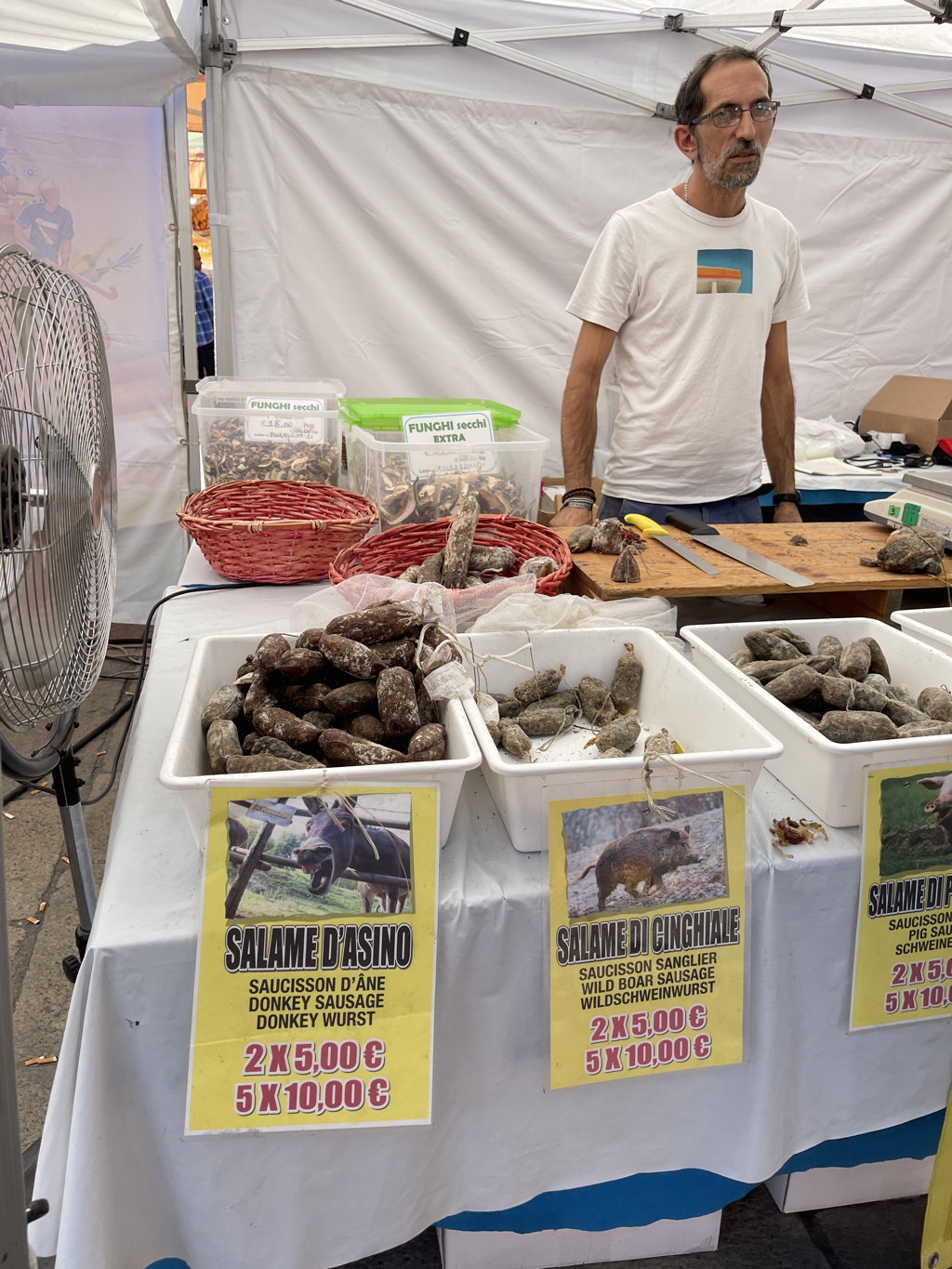


The Torre Prendiparte turns out to be open on Sunday, so we climbed to the top. Bologna was really into building skyscrapers in the late middle ages. It’s not agreed upon how many towers were built during the 12th and 13th centuries, but despite attrition, around twenty remain. Prendiparte is currently used as a B&B, if you don’t mind your room opening onto a precipitous stairway traveled by tourists.

After that, we just wandered amid the porticos. Bologna is famous for its covered walkways. One of the tallest porticos goes under a house, about three tall stories off the ground, and you’re supposed to be able to see three arrows piercing the roof but I can only persuade myself of having seen one and that’s with much imagination. An even larger market occupied one of the other Obscure Atlas streets. I bought three post cards. You are supposed to turn around and look up to admire several faces in rondels on the opposite portico, one of which is more Demonic than the others. So we did that. Grinning statues are often parsed as demonic.

The next photo opportunity was a group of life-size statues by Niccolo dell’Arca, executed in terra cotta around 1460, the “Compianto sul Cristo morto”. When you think of how other artists were representing the human form at that time, you’d really think he time traveled from today. The expressions are absolutely modern. It’s like Franz Xaver Messerschmidt’s 18th century “character heads” — sudden bursts of intense realism (as we now see it), thrust into artistic traditions that had no place for them. But they seem to have been well-respected, he got lots of commissions afterwards.
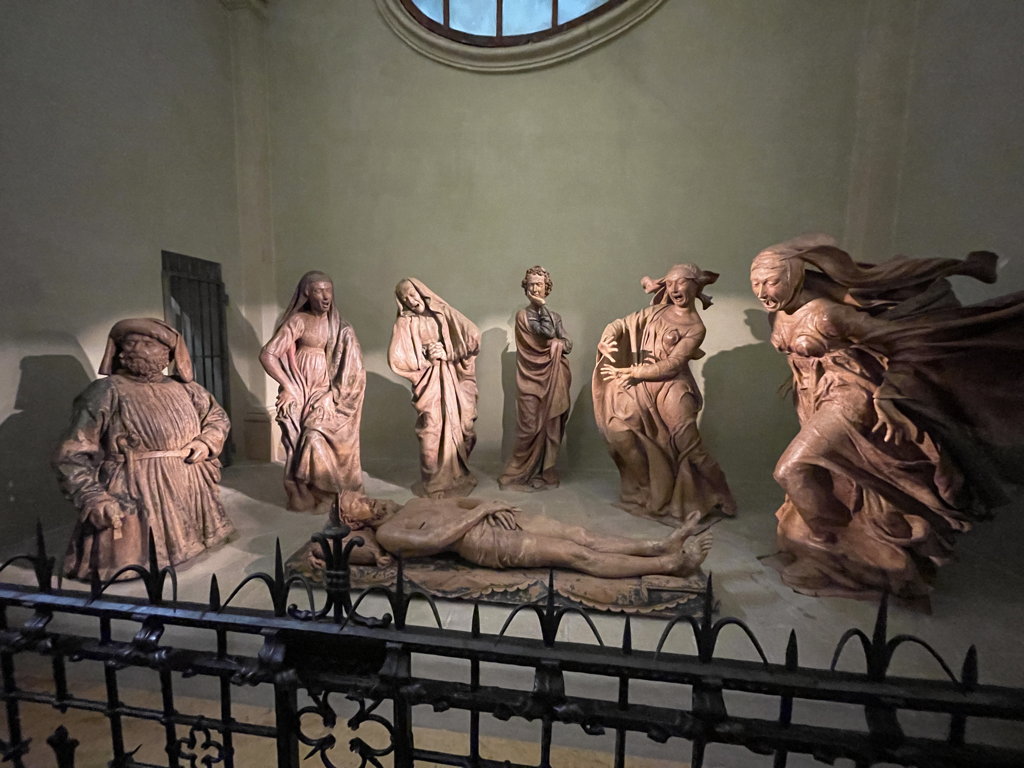
That said, the “Lamentations of Christ” meme really has nothing on the “Death of Buddha”. The formula for “Death of Buddha” is that you represent every possible reaction to death, according to your particular place along the path, with Buddha himself being most serene. The Christ reactions are all on the same part of the spectrum, except the guys are a little more stoic. You might as well be looking at Rembrandt’s “Anatomy Lesson”.
There is another terracotta group upstairs, in the Oratorio dei Battuti. The oratorio was mostly walled off, as if it were being set up for a dinner or a shared workspace or something.
Meanwhile, out on the plaza, a super annoying rock group was playing. We walked briskly past City Hall, where a big poster advertised the centenary of local Favorite Son Pier Paolo Pasolini, and the statue of Neptune, whose penis was shrunk on the order of the pope, but we are assured by Atlas Obscura that it can still be seen standing proud if you position yourself right and behind at one point. This seems to be true.
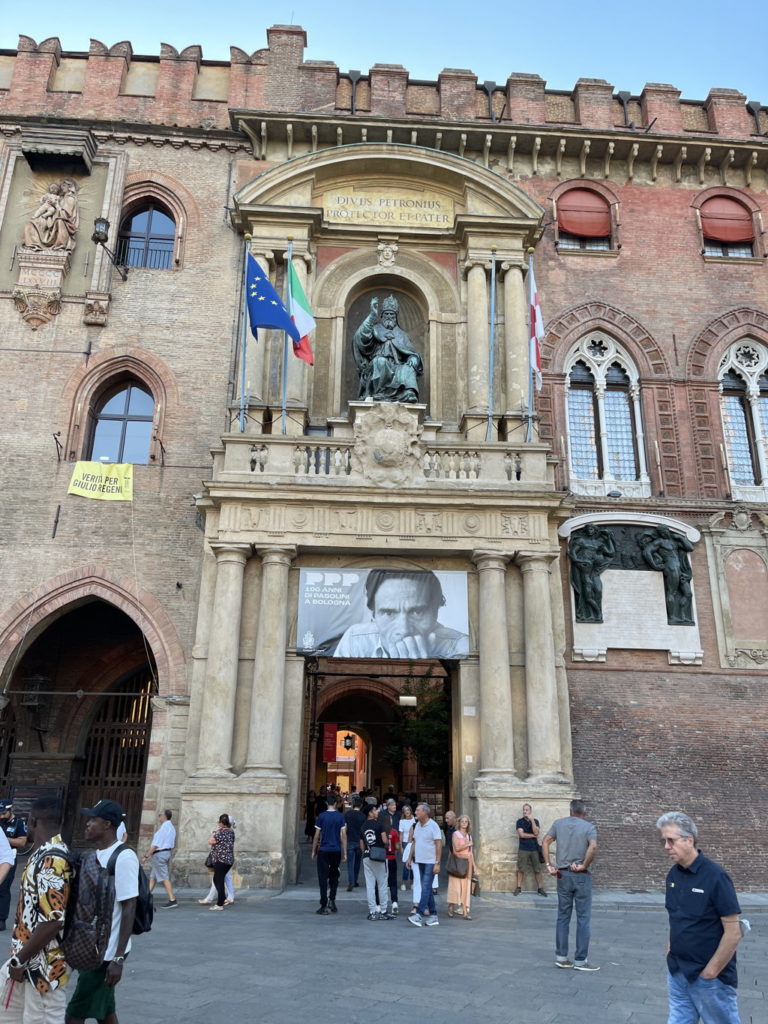

Bologna has a reputation as a left-wing city. The city has installed an immense facebook on the walls of City Hall and the library, showing victims of the resistance to Mussolini and to the puppet government installed by the Nazis after the Italian government pulled out of the war in 1943. The town was one of few in Italy to favor the left coalition in the Italian election on September 25.
And so to dinner. Ristorante da Nello al Montegrappa was touristic in the sense that the smiles on the old waiters were well practiced to the breaking point, but the food was good. There were dietary issues, but professionals who have accommodated Americans have seen it all and were able to make sure that everyone was well satisfied.
We walked slowly up to the train station and Sienna got on the train, having arranged for her Italy mom to pick her up an hour later at the station there.
Monday, September 12
This day, we spent on our own. We began by walking toward the center of past the Parrocchia Sacro Cuore di Gesù, a monumental church of brick, very 19th century industrial. In keeping with the industry, there is a tradie on a stained glass window (below). The catholic taste extends beyond choirboys.
Across the street, the love child of Donald Judd and Richard Serra have got together in Heaven (except Mr. Serra is alive) to produce a Shoah memorial. I didn’t know what it was until I read the label — I still don’t know who made it; it’s credited to “SET Architects” — then you realize it is meant to represent the living space allotted to the slaves who were being worked to death — It’s a hard subject to represent. Many cities, including Berlin, have turned to the repetition of inanimate objects, rather than human figures, such as found at Père Lachaise cemetery for example.

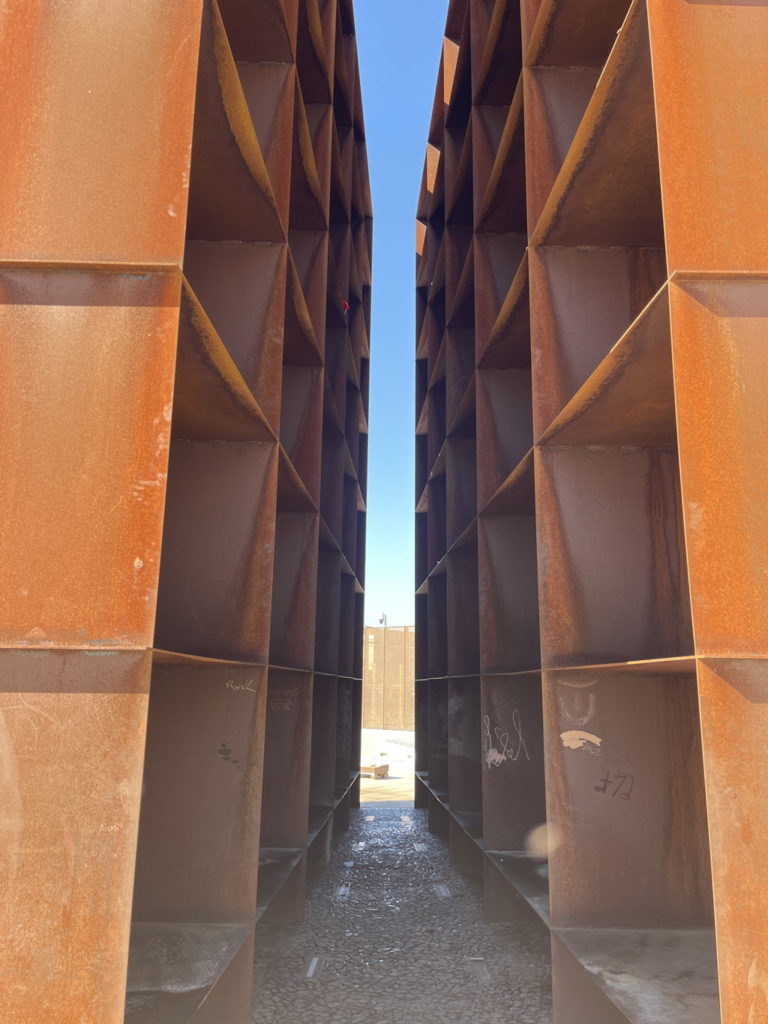
The problem with representations of living spaces, is that homeless people will try to live in them. There is some evidence of that.
We walked downtown. Wandered into other huge churches, San Pietro Cathedral, and the Basilica di San Petronio, in Piazza Maggiore. The latter also had a terra cotta, of Jesus, lying on a representation of the burial shroud of Turin, which made me think, with the right technology you could have something like a photobooth where your image could come out on cloth.
The real goal was the Anatomy theater, at the Archiginnasio library. This is a simple square room, with raised bleachers where students could watch anatomy lessons on the table in the center, but the whole thing is done in wood, with elaborate carvings of famous doctors and anatomically instructive life sized statues. Don’t forget to look up.

The highlight of the day was a walk up and back on the Portico of the Santuario della Beata Vergine di San Luca, which stands on a hill outside of town. The walk is 4.4 km and begins at the city wall. It is lined with memorials and interesting graffiti and if you stop and look too much at them people will think you are old or slacking with respect to the hike. It’s hard to appreciate life and look busy at the same time. But if you don’t read gravestones, how will you learn of massacres and plagues?
On our return, we dropped by the city library, which was open, and looked at the Roman foundations of the City, and wandered out to a statue which is not in the classic tradition, and then our cell phones both ran very low on batteries so there was nothing to do but eat.
We had reservations at a place called VIVO, which also doesn’t have Spaghetti Bolognese. It has occurred to me before, that going to places with culinary traditions and eating at World Class Restaurants is not different from going and eating at Domino’s Pizza. It isn’t the local culture. But we are at least supporting the local artists, and VIVO needs this because it is understaffed. One poor waitress had a whole room, six tables of foreigners, each one doing an asynchronous tasting menu so she couldn’t just sit at the head of the room and say “Class!”
VIVO is one of the places where they tell you if a thing is sturdy enough to eat with two bites or if it must be popped in the mouth whole.
Or, just admire the decoration. I took a movie of pouring chocolate sauce onto ginger ice cream.




